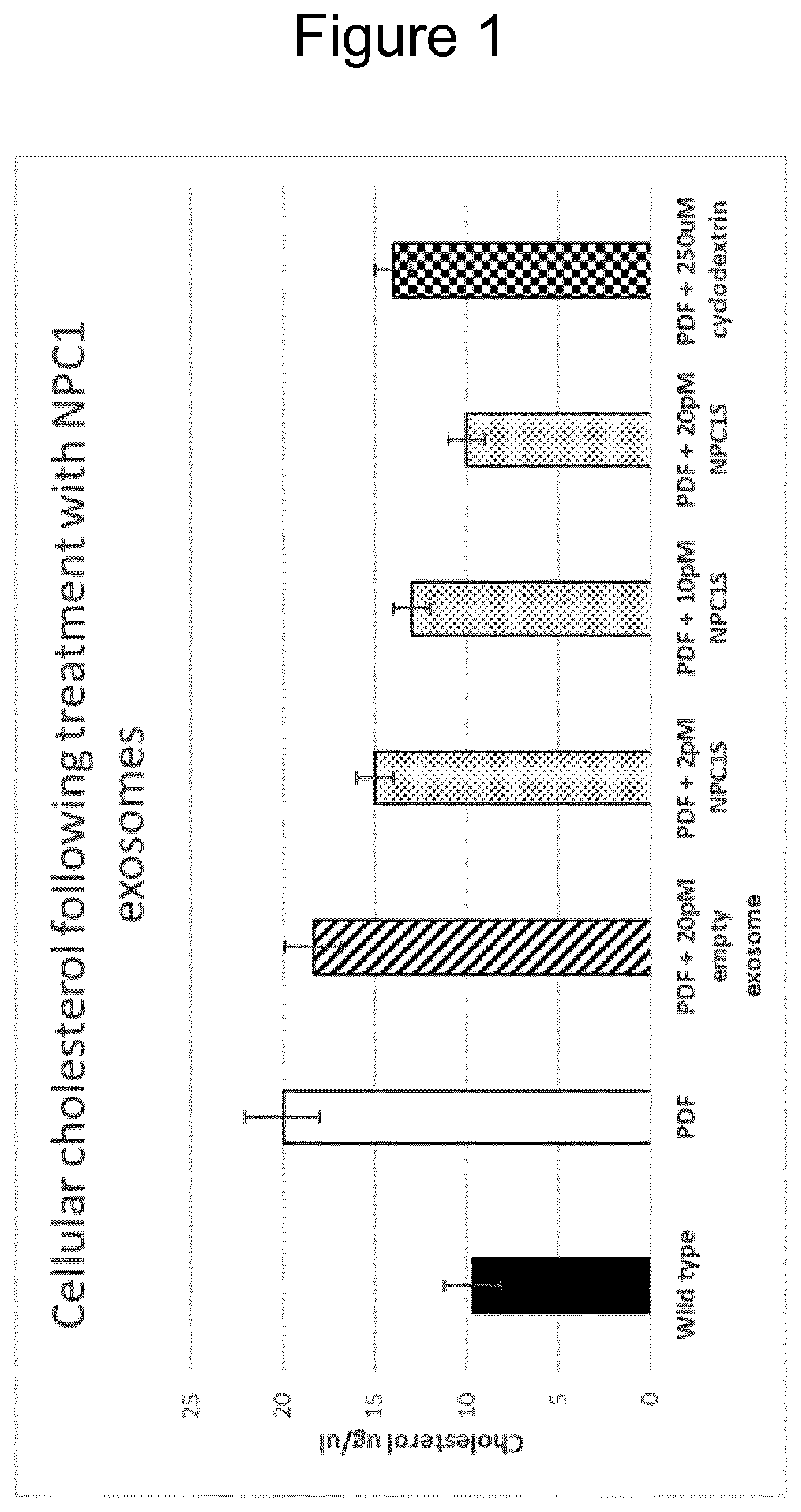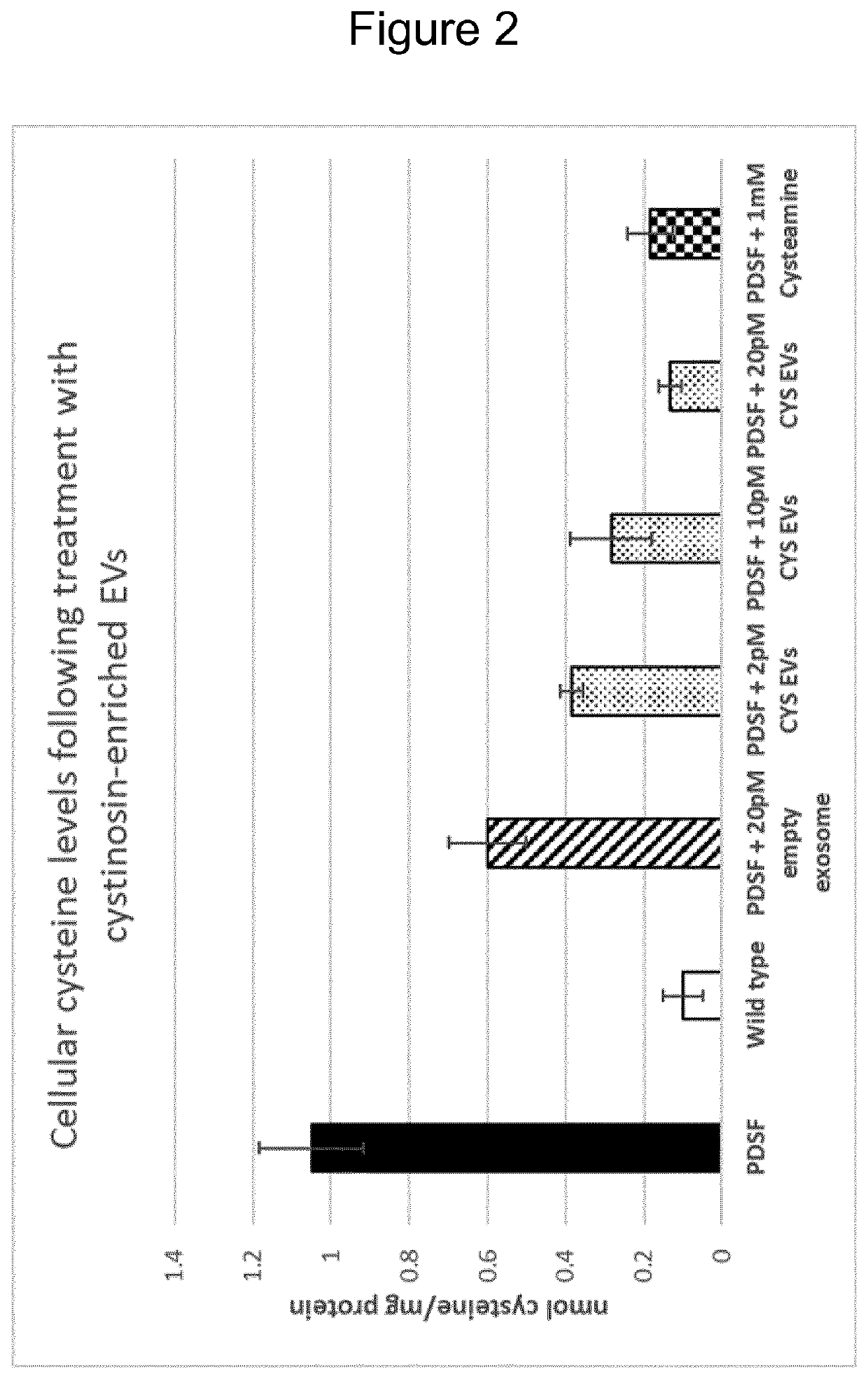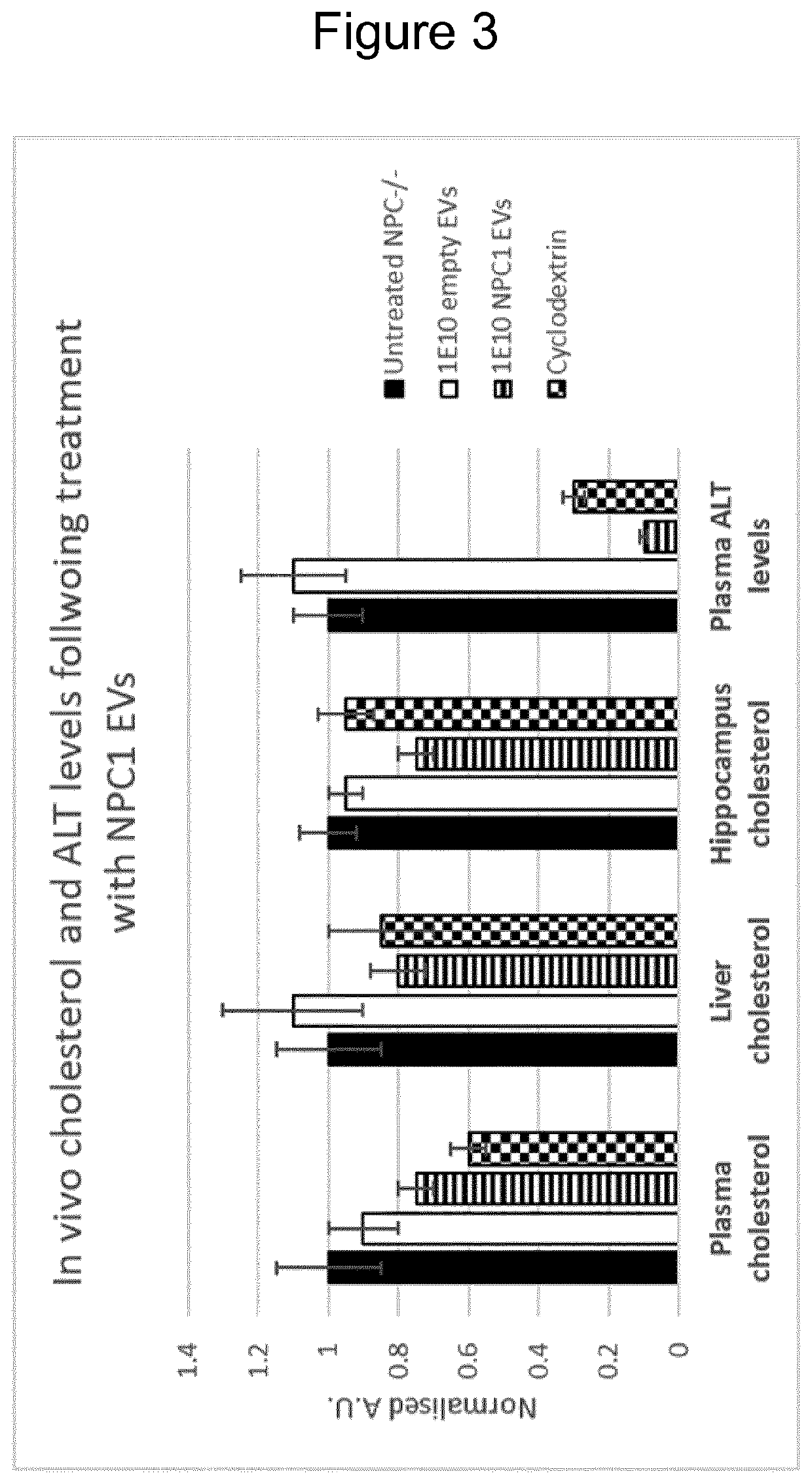Protein engineered extracellular vesicles
a technology of extracellular vesicles and proteins, applied in the direction of transferrins, drug compositions, metabolic disorders, etc., can solve the problem that fusion proteins do not enable the bioactive loading of actual therapeutic lysosomal proteins per se into evs
- Summary
- Abstract
- Description
- Claims
- Application Information
AI Technical Summary
Benefits of technology
Problems solved by technology
Method used
Image
Examples
experimental and examples
Materials and Methods
[0064]Construct design and cloning: Various polypeptide constructs comprising at least one lysosomal protein and optionally other polypeptide domains (such as EV enrichment polypeptides) have been constructed, cloned into vectors and produced in several different EV-producing cell sources, in particular AE cells, MSCs and placenta-derived cells. ORFs were typically generated by synthesis and cloned into the mammalian expression vector pSF-CAG-Amp. Briefly, synthesized DNA and vector plasmid were digested with enzymes NotI and SalI as per manufacturers instruction (NEB). Restricted, purified DNA fragments were ligated together using T4 ligase as per manufacturers instruction (NEB). Successful ligation events were selected for by bacterial transformation on ampicillin-supplemented plates. Plasmid for transfection was generated by ‘maxi-prep’, as per manufacturers instruction.
[0065]Cell Culture and Transfection
[0066]Depending on the experimental design and assays, ...
example 1
[0072]Amnion epithelial (AE) cells, obtainable from post-partum placenta, were genetically engineered (using lentiviral transduction) with a polynucleotide construct encoding a polypeptide construct comprising the NPC1 protein and the N terminal portion of the EV enrichment protein syntenin (NPC1S) (SEQ ID NO 2). AE-EVs produced by the AE cells were harvested, purified, and evaluated in vitro for their ability to enhance cholesterol transport in patient-derived fibroblasts (PDF). As can be seen in FIG. 1, the NPC1 AE-EVs significantly decreased cholesterol levels in the target cells by delivering the bioactive NPC1 protein in high amounts to the cells. Interestingly, when using AE-EVs and MSC-EVs only (and no other cell sources) was it also possible to achieve dose-dependent reduction in cholesterol accumulation by genetically engineering the AE cells to express the NPC1 protein per se, without the presence of any EV enrichment polypeptide (data not shown). The EV-producing cells an...
example 2
[0073]Wharton's jelly MSC-derived EVs (WJ-MSC-EVs, obtainable from Wharton's jelly) were genetically engineered with a polynucleotide construct encoding a polypeptide construct comprising the lysosomal protein cystinosin and the EV enrichment protein CD63. The cystinosin-containing WJ-MSC-EVs (CYS EVs) were harvested from hollow-fibre bioreactor cell culture of the WJ-MSCs, purified, and evaluated in vitro against patient derived skin fibroblasts (PDSF) to assess reduction in cystine accumulation in an in vitro model of cysinosis. FIG. 2 illustrates the strong decrease in cysteine seen when applying the WJ-MSC-EVs comprising the CD63-cystinosin polypeptide construct. As in Example 1, the WJ-MSCs and the WJ-MSC-EVs were positive for Hsp70 proteins, and specifically Hsp70-8, as well as for the tetraspanins CD63 and CD81.
PUM
| Property | Measurement | Unit |
|---|---|---|
| Fraction | aaaaa | aaaaa |
| Fraction | aaaaa | aaaaa |
| Fraction | aaaaa | aaaaa |
Abstract
Description
Claims
Application Information
 Login to View More
Login to View More - R&D
- Intellectual Property
- Life Sciences
- Materials
- Tech Scout
- Unparalleled Data Quality
- Higher Quality Content
- 60% Fewer Hallucinations
Browse by: Latest US Patents, China's latest patents, Technical Efficacy Thesaurus, Application Domain, Technology Topic, Popular Technical Reports.
© 2025 PatSnap. All rights reserved.Legal|Privacy policy|Modern Slavery Act Transparency Statement|Sitemap|About US| Contact US: help@patsnap.com



